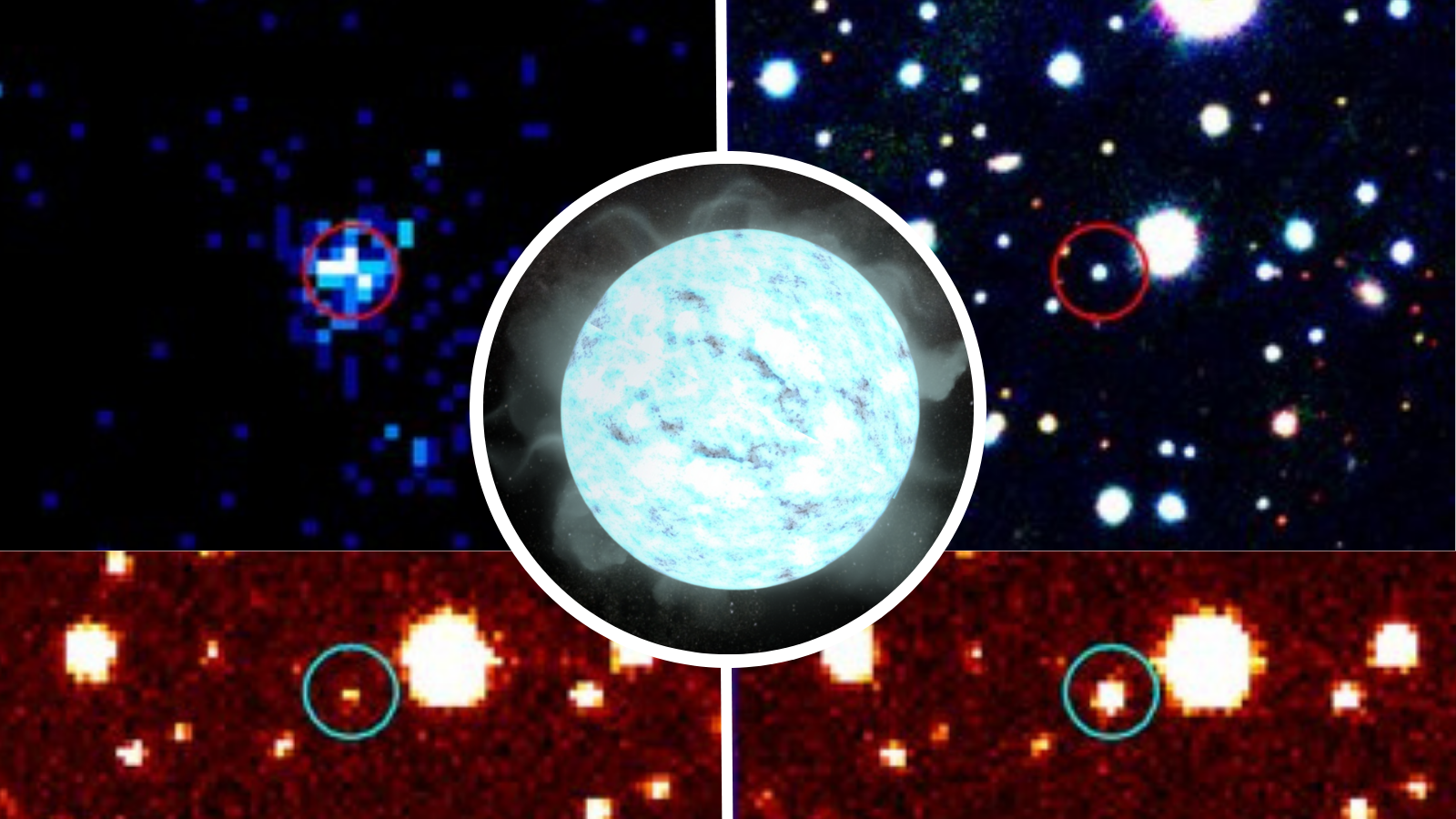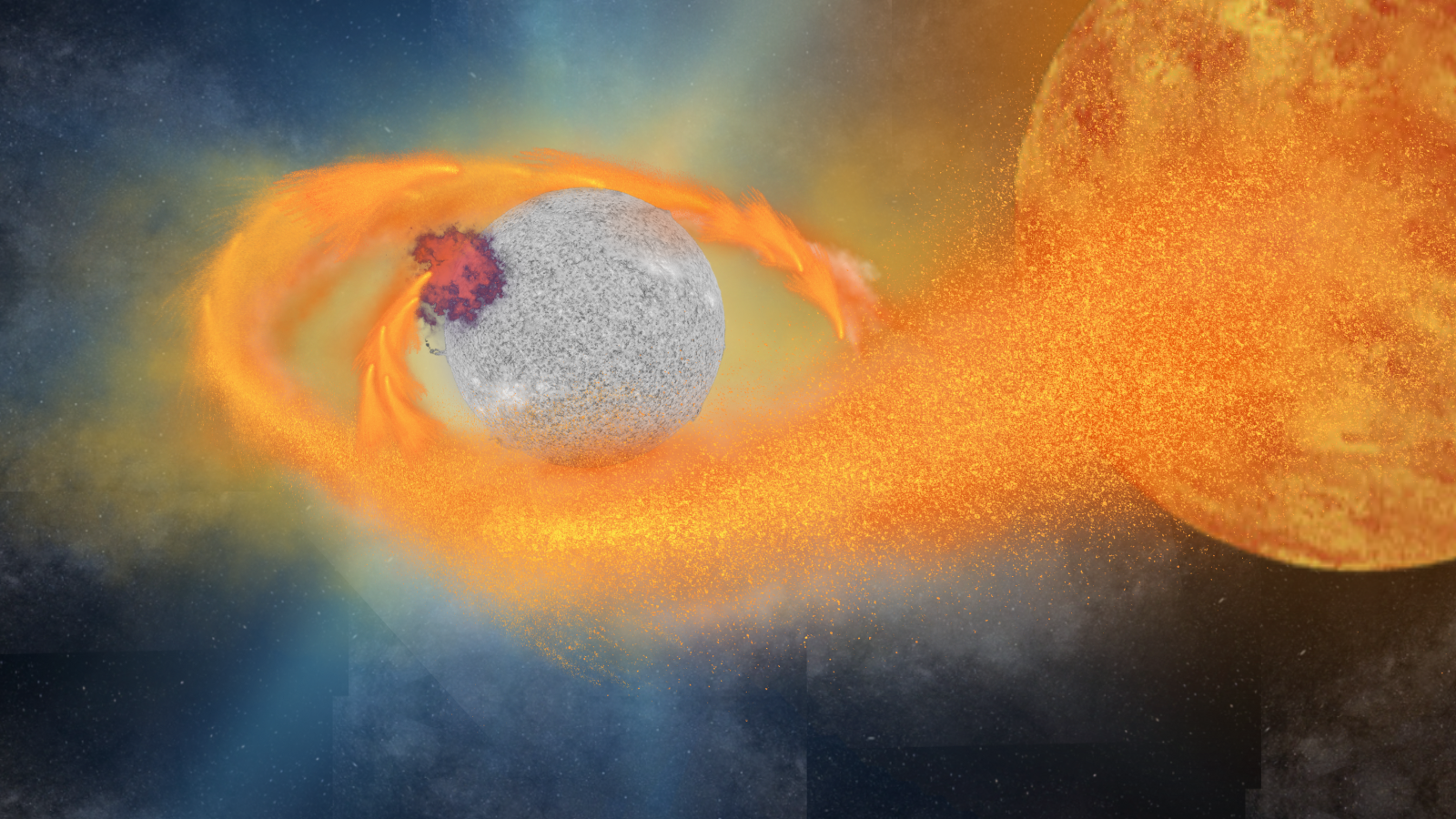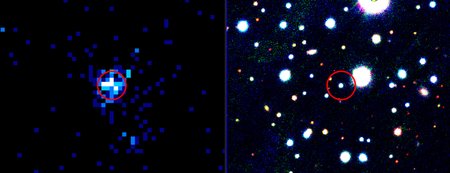Missing link star? Why this 'teenage vampire' white dwarf has scientists so excited
"This was the first star we've seen that is right in the middle of its 'teenage' phase."

Astronomers have discovered the "missing link" connecting the death of sunlike stars to the birth of white dwarf stellar remnants, in the form of a "teenage vampire" white dwarf.
This vampire isn't interested in the blood that runs through your veins, though. The white dwarf in question, designated Gaia22ayj and located around 8,150 light-years from Earth, is ravenously feeding on stellar plasma from a companion star.
The team that made this discovery observed the white dwarf using the Zwicky Transient Facility (ZTF) at the Palomar Observatory in California. The researchers scanned the night sky over the Northern Hemisphere, hunting "transients" — astronomical bodies undergoing rapid change.
Gaia22ayj originally attracted the attention of astronomers with its rapidly pulsing signal, which led to it being classified as a detached double white dwarf binary — two white dwarf stars orbiting each other.
However, this theory didn't quite match further observations of Gaia22ayj, which revealed it to be one of the most extreme pulsating objects ever seen, increasing in brightness by 700% over just a 2-minute span.
That's because Gaia22ayj is actually a white dwarf feeding on a companion star, with this binary in a rare and short-lived phase of its life (or should that be death).

Know your dead stars
Stars die after they use up the fuel needed for nuclear fusion. What kind of death, and afterlife, they experience depends on their mass.
Breaking space news, the latest updates on rocket launches, skywatching events and more!
Stars with masses above eight times that of the sun die in violent supernova explosions and then become either highly dense neutron stars or black holes. Stars with masses closer to that of the sun don't "go nova," instead undergoing more muted transformations into white dwarfs.
Our own sun will experience this latter transformation in around six billion years after shedding most of its mass during a swollen red giant phase, eventually sputtering out as a smoldering stellar ember.
However, around half of all stars with masses similar to that of the sun have a binary companion star. And, if their companion stars get too close, white dwarfs can get a second burst of life by stripping them of stellar material. That vampiric mass transfer process is exactly what seems to be happening between the white dwarf of Gaia22ayj and its companion star.

Gaia22ayj initially confused astronomers. The way that its light intensity varied over time — its light curve— made no sense for a detached double white dwarf binary.
This led Tony Rodriguez, a graduate student in the California Institute of Technology's ZTF Stellar Group, to question why the light curve would take the shape it did. Gathering more data, Rodriguez and colleagues realized that Gaia22ayj is likely a white dwarf orbited by a "normal" low-mass star, not a second white dwarf. And they further determined that Gaia22ayj is highly magnetic, with its white dwarf component spinning at a rapid rate.
This reminded them of a white dwarf pulsar, a highly magnetic dead star that sweeps electromagnetic radiation across the universe as it spins, like a cosmic lighthouse. However, the vampiric feeding process found in Gaia22ayj isn't something usually associated with white dwarf pulsars.

The team eventually concluded that Gaia22ayj is a missing link in the life cycle of white dwarf pulsars, a rare and short-lived early phase of these objects.
"We have already seen two infant systems, white dwarf stars in a binary system whose rapid spin builds up a strong magnetic field. And we had seen lots of adult star systems where the white dwarf star was spinning very slowly," Rodriguez said in a statement.
"But this was the first star we've seen that is right in the middle of its 'teenage' phase, when it has already established a strong magnetic field and is just beginning to funnel matter from the companion star onto itself," he added. "We have never before caught a system in the act of spinning so rapidly but also slowing down dramatically, all while gaining mass from its companion."
This discovery is even more exciting because this phase lasts for just around 40 million years. That might sound like an incredibly long period of time, but it's relatively short when considering that stars like the sun live for around 10 billion years before they even transform into white dwarfs. Thus, this "teenage phase" accounts for just 0.4% of a star's lifetime. For context, if the star were an average human, this teenage phase would last just around 107 days.
Hardly enough time to paint your bedroom black.
"The data taken at the W. M. Keck Observatory provided firm evidence that this system had a strong magnetic field and was funneling matter onto the white dwarf," Rodriguez said. "Additional data from the unique instruments available at Palomar Observatory showed that this system is, remarkably, slowing down."
The team's research was published in February in the journal Publications of the Astronomical Society of the Pacific.

Robert Lea is a science journalist in the U.K. whose articles have been published in Physics World, New Scientist, Astronomy Magazine, All About Space, Newsweek and ZME Science. He also writes about science communication for Elsevier and the European Journal of Physics. Rob holds a bachelor of science degree in physics and astronomy from the U.K.’s Open University. Follow him on Twitter @sciencef1rst.
You must confirm your public display name before commenting
Please logout and then login again, you will then be prompted to enter your display name.
